The next section of this coastal traverse starts on the east side of Lyme Regis and can be accessed via the car park on Charmouth Road (A3052). From the car park it is possible to reach the beach via steps that have been recently put in place taking you down to the new sea wall walkway mentioned in article 31. It is worth looking at the various techniques that have been used to stabilise Church Cliff which previously had been much affected by mass-movement. Information boards are in place at the western end of the new sea wall walkway to explain the engineering geology involved. This involves drainage, soil nails, concrete piles and anchors and steel netting. Soil pins and netting can be seen in the picture below. These techniques have stabilised the slope and help to protectproperty above from serious damage. Some movement is still possible and a low wall (seen in the right lower corner) will stop clay slipping onto the sea wall walkway.
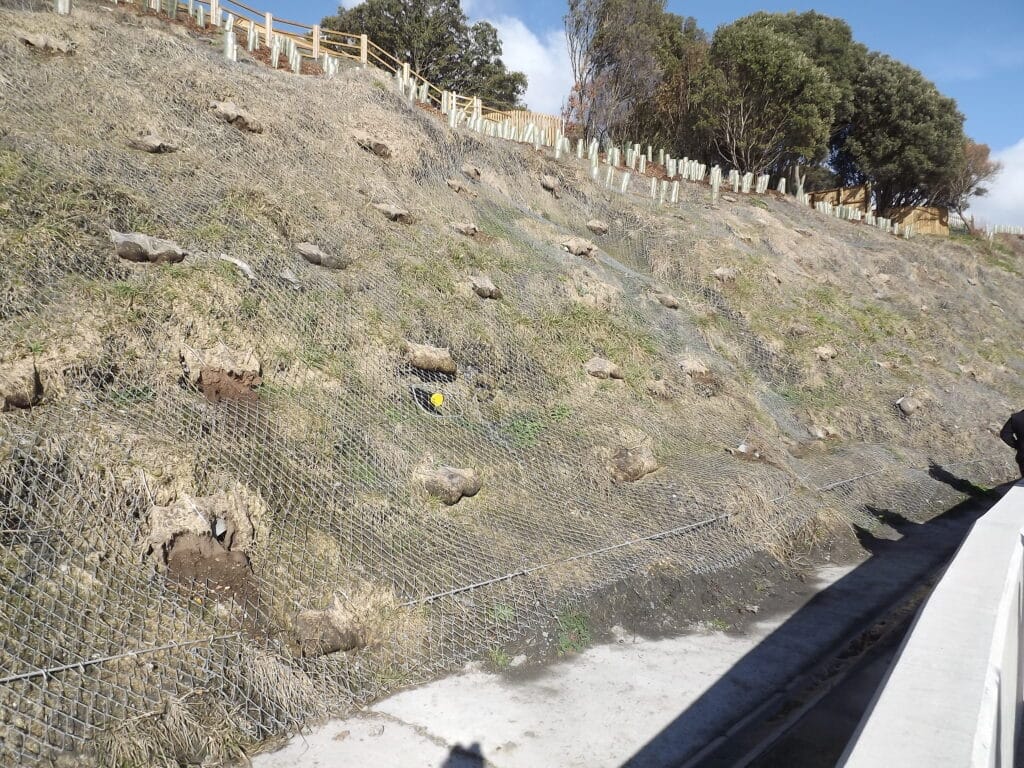
On reaching the end of the new engineering works you will see evidence of earlier efforts to protect Lyme Regis from coastal erosion and mass-movement. As you walk into Lyme it is worth looking at the stone that has been used over the years. Some is local especially limestone from the Blue Lias and this has experienced considerable weathering due to its exposed position. It was not used on the exposed sea wall but it was on less exposed positions. The picture below pockmarking called honeycomb weathering and there is even a small ammonite.
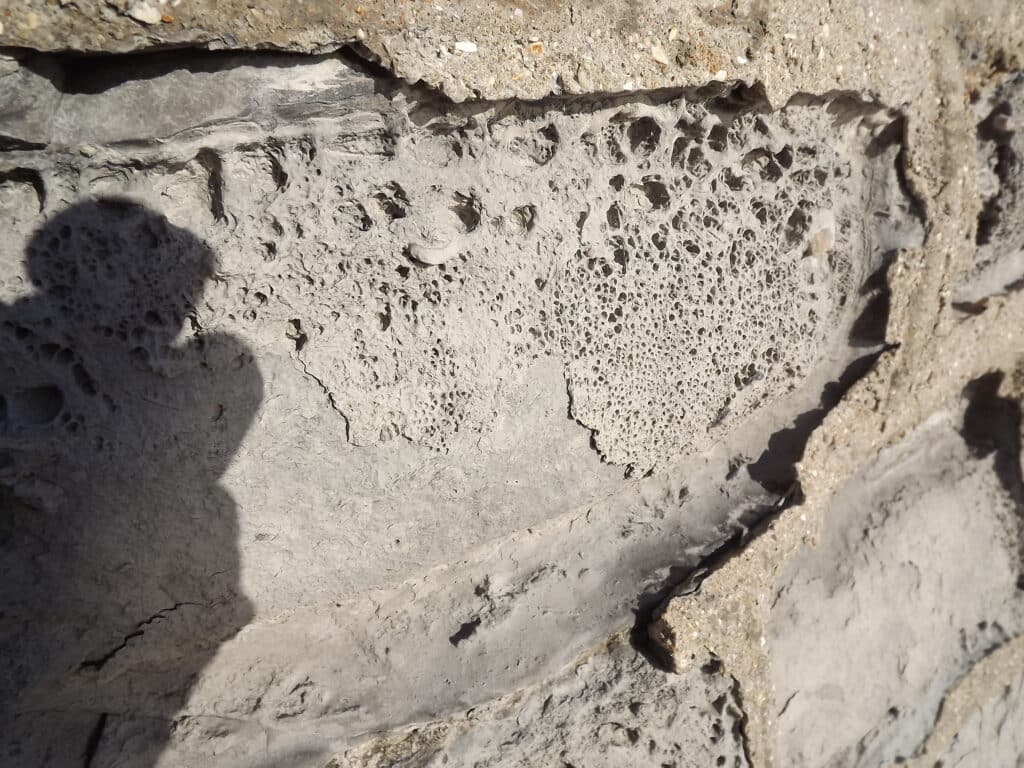
Other rock used is of ‘foreign’ origin including some Portland Stone shelly Roach. There is also igneous rock used as rock armour seen in the picture below possibly from Norway (Larvikite). This is part of work done in 1993-5.
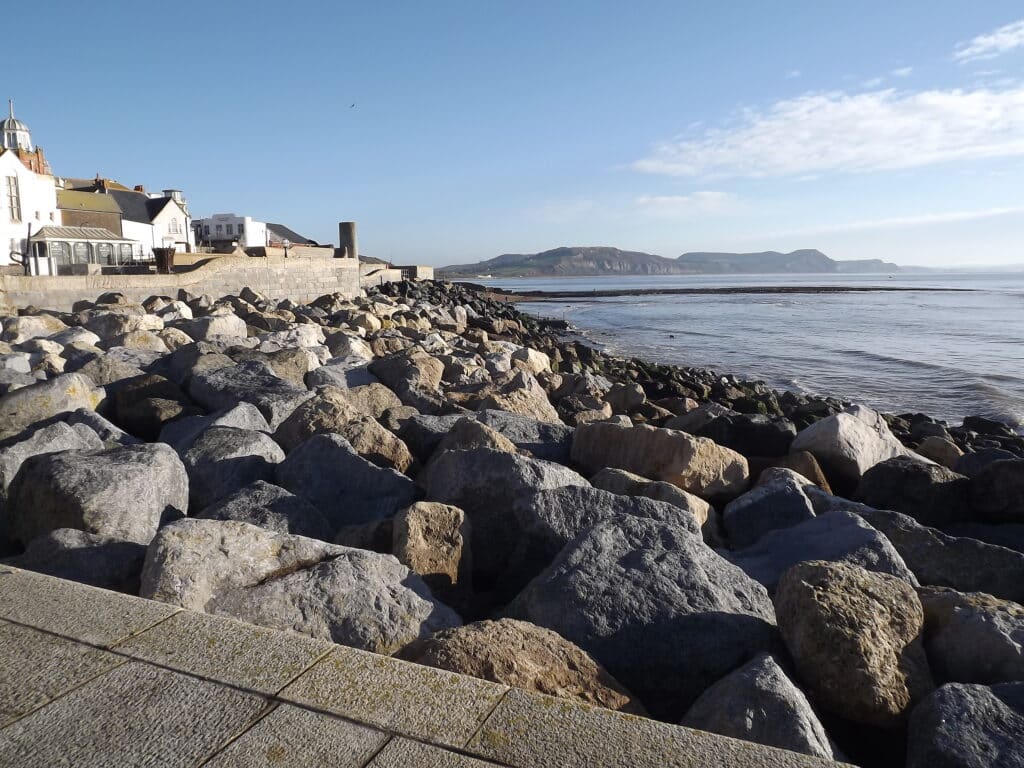
The bridge over the River Lim is worth a closer look as the parapets are made of fossiliferous Carboniferous Limestone (corals) probably from the Mendips in Somerset.
It is worth taking a detour at this stage to look at the fossil shops in Lyme and also to visit the Museum where there is an excellent display of geological material.
Continuing along Marine Parade look out for other rock types. One fine house is partly made of Ham Stone (Upper Lias limestone) from the Montacute area of south Somerset seen in the picture below. There are also some ammonites in the wall, unfortunately rather weathered in this exposed position.

Further along Marine Parade is Langmoor Gardens which was also part of another coastal protection project in 2005-2007. This not only involved slope stabilisation of the garden area but also a new seawall, beach replenishment with shingle and new groynes to keep the shingle in place as seen in the picture below. On a fine day such as the one when this picture was taken there are excellent views of the coast to the east.
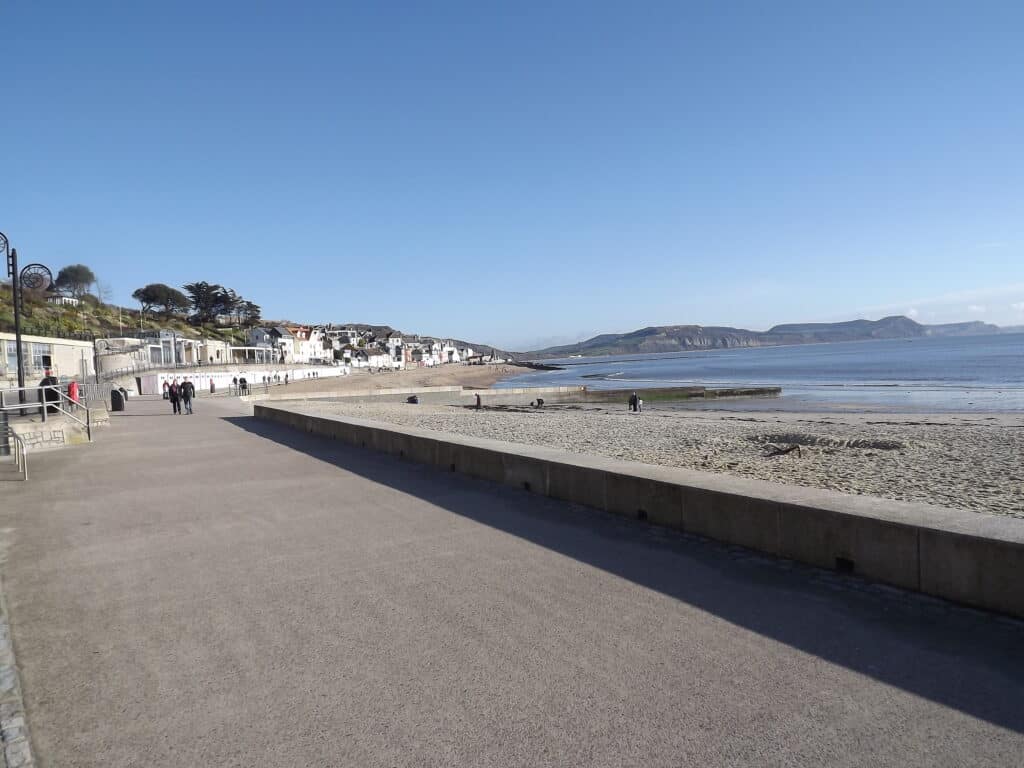
At the end of Marine Parade look out for some south west England granite which has weathered much better than the local Blue Lias limestone. It is also worth walking around the Cobb where there are fine views of the coast to the east and west. Stone used for the Cobb includes Portland Limestone (Roach) and the end groyne is again made of imported Larvikite.
In the picture below you can see Monmouth Beach with the cliff behind made of Lower Lias (Lower Jurassic) rocks, Blue Lias, Shales with Beef and Black Ven Marl. In land the Upper Greensand occurs (Cretaceous), as previously explained at Black Ven, Stonebarrow and Golden Cap and mass-movement occurs putting property, mainly beach chalets, are at risk. Major problems occurred during wet weather during 2011-12as seen in the second picture below.


Walking along Monmouth Beach can be rather hard going but if the tide is low the sand is a bit easier than the pebbles and boulders higher up the beach. Rock falls are common so keep away from the cliffs. However, the walk is worthwhile to reach what is known as the ammonite graveyard where a bedding plane in the Blue Lias has large numbers of ammonites and some nautilus exposed. Some large and some small specimens occur and it is thought that the larger specimens are female and the smaller ones are male, an example of sexual dimorphism! Unfortunately, erosion is wearing the fossils away but little can be done about this.
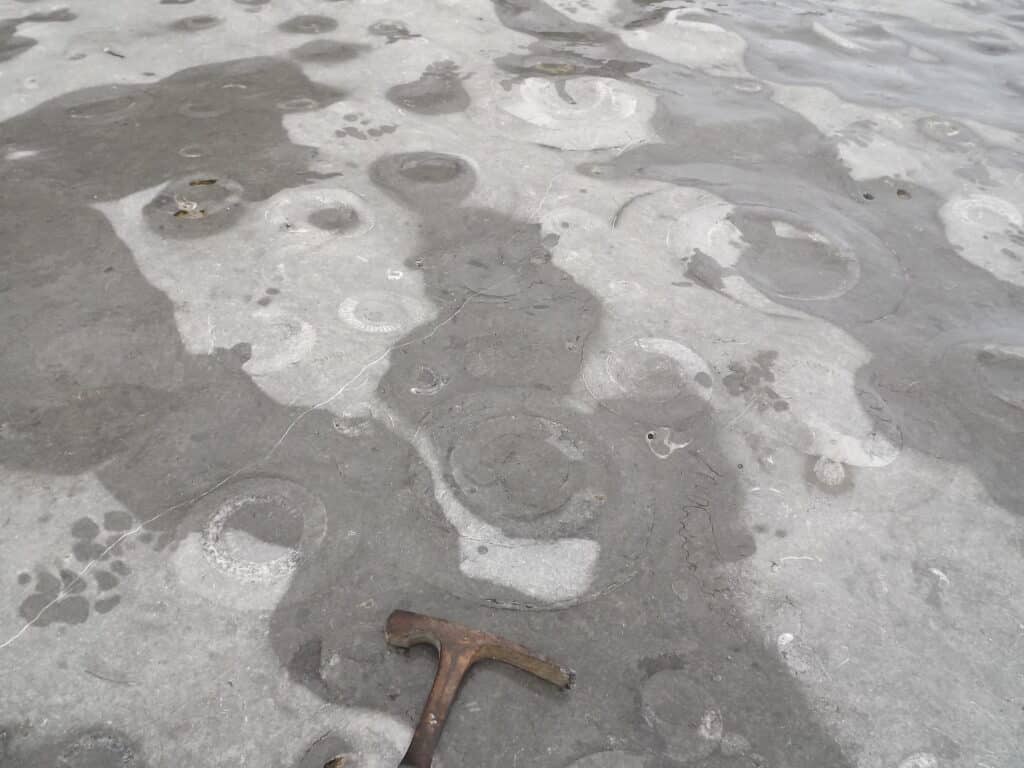
Alan Holiday
PLEASE SUPPORT US FOR JUST £2 A MONTH







